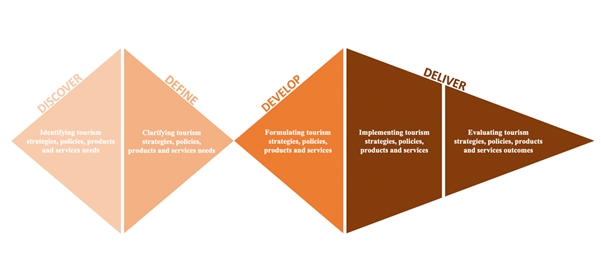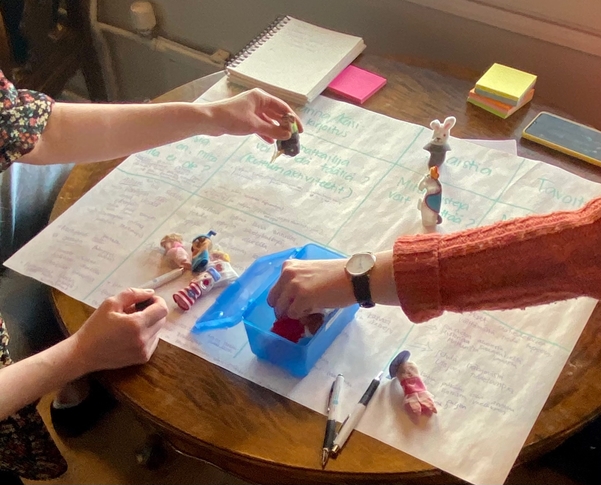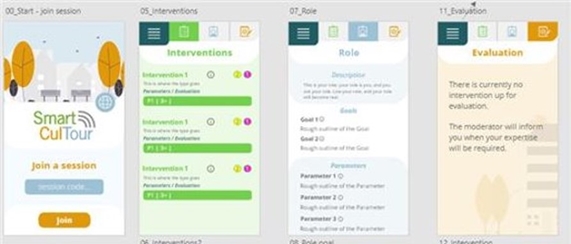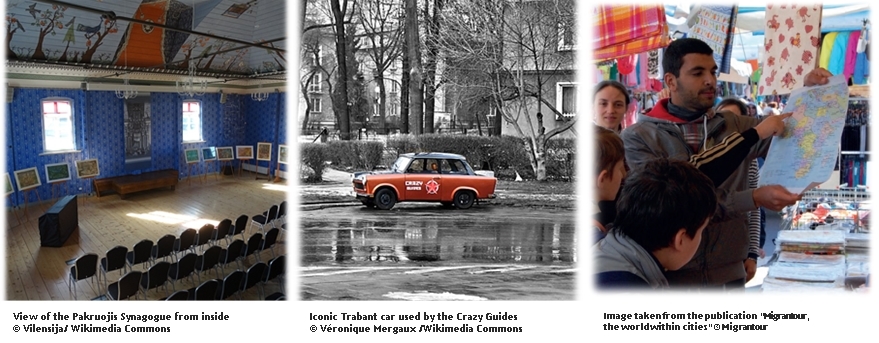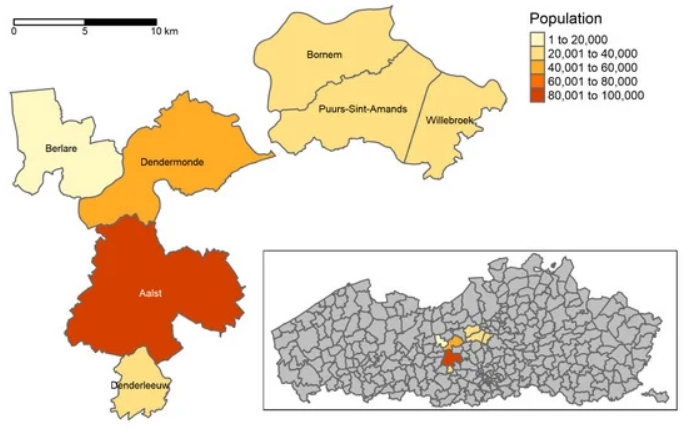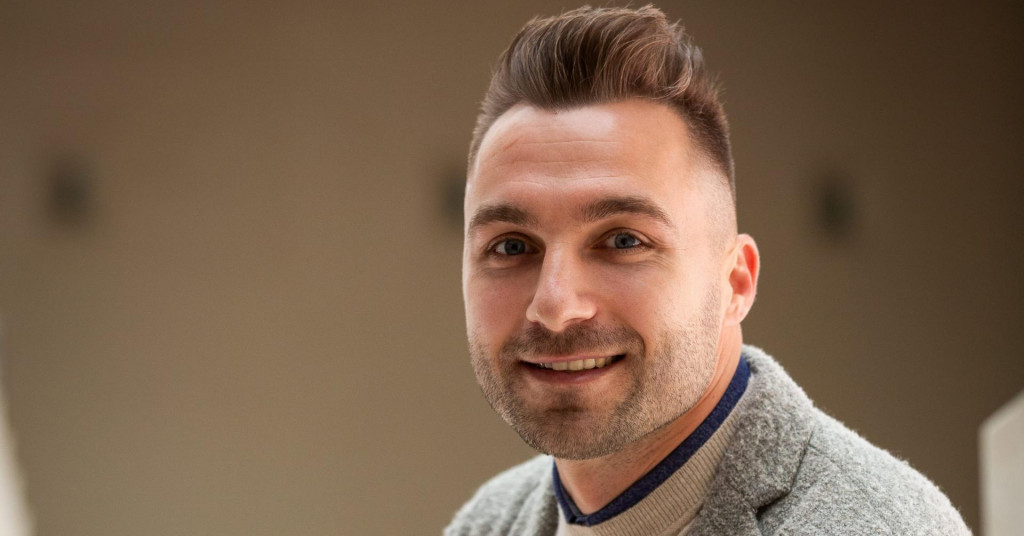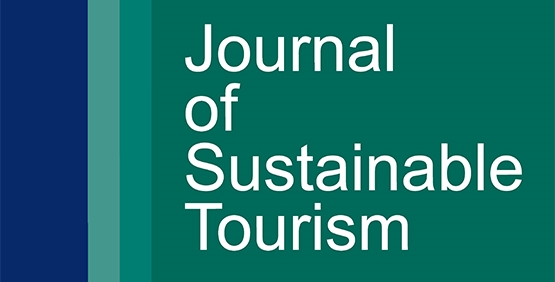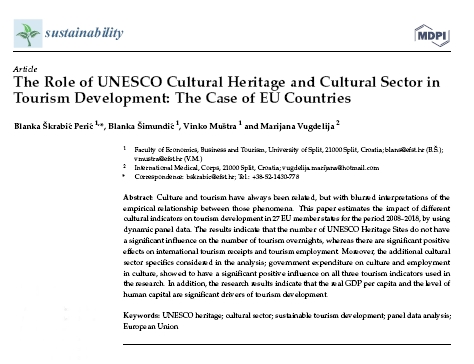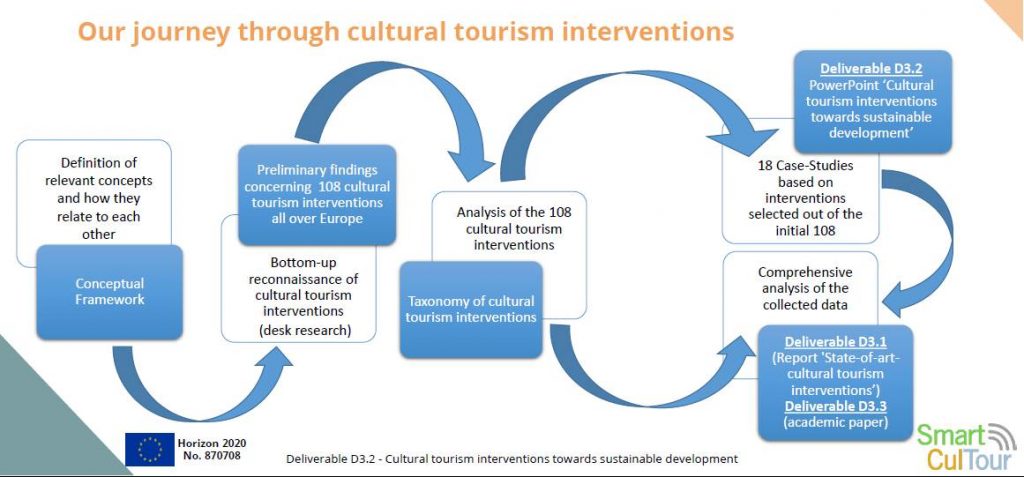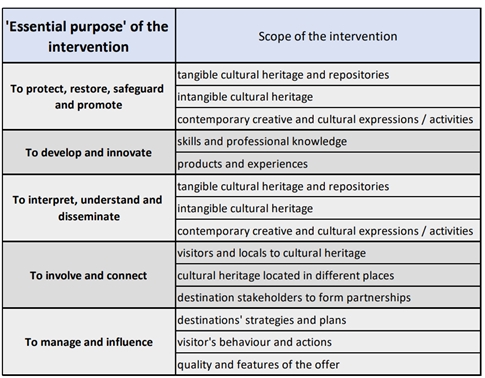Tehnologija predstavlja podlogu koja je nužna za razvoj pametnog turizma. Ali, ona sama po sebi nije dovoljna. Da bi se destinacija mogla okarakterizirati kao „pametna“ inovacije trebaju odražavati sinergiju različitih dionika, ističe dr. Ante Mandić s Ekonomskog fakulteta u Splitu
Prošlog tjedna Europski parlament zatražio je da nacionalni planovi oporavka budu u potpunosti usklađeni s potrebama i ciljevima pravednog i zelenog rasta te digitalne transformacije. Zastupnici su istaknuli kako je Mehanizam oporavka i otpornosti (RRF) povijesni EU instrument koji ne samo da mora ublažiti negativne posljedice pandemije COVID-19, nego također imati trajni učinak na opću dobrobit te pomoći pravednoj raspodjeli gospodarskog rasta.
Hrvatska je 15. svibnja Komisiji dostavila službeni plan oporavka i otpornosti u kojem traži gotovo 6,4 milijarde eura bespovratnih sredstava za zeleno i digitalno gospodarstvo, javnu upravu i pravosuđe, obrazovanje, znanost i istraživanje, tržište rada i socijalnu zaštitu te zdravstvo. Plan uključuje i inicijativu za obnovu zgrada, a Vlada očekuje da će ulaganjima i projektima u idućih pet godina uspjeti gospodarstvo učiniti otpornijim na buduće krize.
S obzirom na značaj turizma u Hrvatskoj zanimalo nas je kako se u tom sektoru ostvaruje digitalna transformacija, koliko su kod nas dosad zaživjele inovacije u turizmu i što još možemo očekivati kad je riječ o pametnom turizmu. Naš sugovornik doc.dr.sc. Ante Mandić s Katedre za turizam i gospodarstvo Ekonomskog fakulteta Sveučilišta u Splitu reći će kako je u Nacionalnom planu oporavka i otpornosti, razvoj održivog, inovativnog i otpornog turizma jedna od šest ključnih komponenti u sklopu prioriteta Gospodarstvo. Na Gospodarstvo je alocirano 54 posto predviđenih ulaganja, a za razvoj turizma 8,6 posto ukupno predviđenih sredstava za Gospodarstvo.
– Ne ulazeći u diskusiju o iznosima alociranih sredstava, Nacionalni plan se fokusira na povećanje otpornosti i održivosti turističkog sektora upravo putem zelene i digitalne transformacije, te ubrzavanja oporavka turizma, povećanja dodane vrijednosti i neizravnih učinaka turističke potrošnje uspostavom učinkovitog okvira za upravljanja razvoja održivog turizma, što u suštini podrazumijeva reformu sustava upravljanja – navodi dr. Mandić.
Što znači digitalna transformacija u turizmu? U pojašnjenju tog koncepta dr. Ante Mandić, koji inače studentima predaje o održivom turizmu, prvo skreće pažnju na novu industrijsku politiku EU-a.
– U ožujku 2020.godine, Europska komisija je predstavila Novu industrijsku strategiju sa tri ključna prioriteta, uključujući zadržavanje globalne konkurentnosti europske industrije, klimatsku neutralnost Europe do 2050., te oblikovanje europske digitalne budućnosti. Ostvarenje tih prioriteta trebale su zagarantirati specifične aktivnosti, među ostalim i snažna potpora održivim i pametnim industrijama, inovacijama te razvoju socijalnog kapitala. Digitalna tranzicija Europe, zacrtana je kroz Strategiju o izgradnji digitalne budućnosti Europe – pomalo utopijski i isključivo afirmativan dokument, koji naglasak stavlja na ulogu tehnologija u promicanju i ostvarenju interesa građana, pravednosti i poticanju tržišnog natjecanja, te njegovanju načela otvorenosti, demokracije i održivosti društva – navodi.
Razvoj ‘pametnog turizma’
Podsjeća nadalje kako se značajniji interes EU-a za digitalizacijom u kontekstu turizma javlja 2015.godine, uspostavom Digitalne turističke mreže (eng. Digital tourism network) – neformalnog foruma EU turističke industrije za diskusiju o ključnim izazovima i prilikama koje digitalna transformacija donosi ovom sektoru. Rezultati istraživanja, koje je Europska komisija provela 2016. i 2018. godine, potvrdili su da se tehnološki razvoj odražava na transformaciju tradicionalnih uloga „proizvođača i kupaca“ u turizmu, te pojavu novih poslovnih modela (npr. ekonomija dijeljenja), ali i potrebnu za novim kompetencijama zaposlenih u sektoru i izvan njega.
Dodaje kako je pojava primjerice digitalnih platformi povećala volumen i raznolikost turističkih proizvoda, usluga i doživljaja, te istovremeno ubrzala ekonomske transakcije, povećala tržišnu dostupnost te količinu i vidljivost povratnih informacija klijenata (primjerice online recenzije posjetitelja).
– Ove promjene na tradicionalnom turističkom tržištu nisu se dogodile «preko noći», već su rezultat kontinuiranog razvoja, u kojemu je posebno evidentno da se razdoblje od inovacije do implementacija znatno skraćuje. Tako je primjerice tradicionalni turizam ušao prvo u fazu «E-poslovanja” koju karakterizira adaptacija tehnologije u segment marketinga i prodaje (unaprjeđenje internih procesa). Nakon toga dolazi faza «E-trgovine» u kojoj tehnologija doprinosi jačanju povezanosti, suradnje i komunikacija između različitih dionika u destinaciji koja rezultira inovacijama duž cijelog lanca opskrbe (destinacija se naziva ekosustav – mreža dionika koji su međusobno povezani i između kojih se formiraju različiti odnosi) – kazuje dr. Mandić.
Eru «Pametnog turizma» koja je potom uslijedila, pojašnjava nadalje, karakterizira svojevrsna evolucija u pristupu korištenja tehnologija u turizmu, prije svega u kontekstu upravljanja turističkim destinacijama, te razvoju nove razine inteligencije unutar destinacijskog sustava (odluke su rezultat strukturiranih procesa i donose se temeljem velike količine podataka i informacija).
– Pametni turizam obuhvaća tri temeljne komponente u kojima je tehnologija (digitalizacija) katalizator inovacija, uključujući pametne destinacije (fokus na upravljanje destinacijom), pametne doživljaje (fokus na unaprjeđenje, personalizaciju doživljaja), te pametni poslovni ekosustav (fokus na jačanje konkurentnosti i unaprjeđenje efikasnosti dionika u segmentu turističke ponude) – kaže naš sugovornik.
Reći će i kako je jedan od temeljnih zaključaka istraživanja koje je Komisija naručila 2018. godine taj da digitalizacija pruža alate i okvir za kreiranje dodane vrijednosti turističkim proizvodima i doživljajima, ali njen uspjeh uvelike ovisi o kapacitetu turističkog «sektora» da uči i surađuje. Do sličnih zaključaka, ističe, dolaze autori jednog od utjecajnijih znanstvenih radova u području pametnog turizma (Smart tourism destinations: ecosystems for tourism destination competitiveness), navodeći kako je uz tehnološku razvijenost, nužan preduvjet razvoja pametnih destinacija inovativnost, razvijen socijalni i ljudski kapital, te vodstvo, budući da isključivo njihova sinergija može dovesti do željenog napretka.
– Pojednostavljeno, tehnologija predstavlja podlogu koja je nužna za razvoj pametnog turizma. Međutim, ona sama po sebi nije dovoljna. Da bi se destinacija mogla okarakterizirati kao „pametna“ inovacije koje se u njoj odvijaju trebaju odražavati sinergiju različitih dionika. Nadalje razvoj ljudskog (znanje, vještine, kompetencije koje podupiru unaprjeđenje osobnog blagostanja) i socijalnog kapitala (mreže povezanih dionika čija se suradnja zasniva na zajedničkim normama i vrijednostima) mora dostignuti određenu razinu. U konačnici treba postojati vodstvo koje će usmjeravati na ostvarenje zacrtanih ciljeva kao što su jačanje održivosti, otpornosti, konkurentnosti, kapaciteta dionika u destinaciji, razvoj određenih posebnih oblika turizam ili inovativnih turističkih doživljaja – naglašava dr. Ante Mandić.
Kazuje i kako se pametnom turizmu i pametnim destinacijama, kao i samoj digitalizaciji, pristupa dominantno afirmativno, što znatno ograničava objektivnost sagledavanja načina na koji bi adaptacija određenih načela pametnog turizma mogla utjecati na pojedini sustav upravljanja razvojem turizma.
-Tako se primjerice često zanemaruje da razvoj koncepata koji uključuju radikalne inovacije, poput pametnih destinacija, za određene dionike podrazumijeva unaprjeđenje konkurentnosti dok za ostale može značiti ugrozu egzistencije. Prisjetimo se samo reakcija na dolazak UBER-a na hrvatsko tržište ili zabrinutosti koju je izazvala snažna ekspanzija platformi za kratkotrajni najam smještaja poput AiRBnB-a i Booking.com-a na tradicionalnom tržištu smještajnih kapaciteta u Zapadnoj Europi i SAD-u. Nadalje, proces unaprjeđenja kolektivnog kapaciteta za apsorpciju i analizu informacija i znanja, što je presudno za razvoj inovacija na destinacijskoj razini, je izrazito kompleksan, zahtjeva puno vremena te sustavan pristup, odnosno nacionalno opredjeljenje među ostalim i kroz obrazovne programe – kazuje.
Također ističe kako u razvoju pametnog turizma ključnu ulogu imaju poduzetnici, pri čemu vrlo često isključivo velike firme imaju resurse (primjerice financije) koji su im potrebni za razvoj ili adaptaciju inovacija. S druge strane, turizam kao djelatnost karakterizira izrazito velik broj malih firmi, što najbolje vidimo u nacionalnoj strukturi djelatnosti.
– U konačnici, često je velika razlika između mikro destinacija s obzirom na njihov inovacijski potencijal, čak i ukoliko destinacije promatramo kao regije, primjerice Istra, Srednja Dalmacija, Kontinentalna RH. Implementacija jedne ili nekoliko značajnijih promjena neće automatski učiniti destinaciju pametnom (što je u RH česta zabluda, primjerice nakon uvođenja e-Parkinga sustava), budući da se radi o dugotrajnom i kompleksnom procesu u kojemu vjerojatno neće uspjeti sve regije, primarno zbog različitosti u njihovom inovacijskom kapacitetu. Na tom tragu mogli bismo zaključiti da veći inovacijski potencijal pa i bolju startnu poziciju u razvoju pametnog turizma imaju destinacije koje imaju razrađenu strategiju pametnog razvoja ili pametnih gradova, poput Zagreba, Rijeke ili Dubrovnika – ističe dr. Mandić.
Hrvatska kao pametna destinacija
Njegovo je mišljenje kako je razvoj pametnog turizma na krilima digitalizacije prihvatljivije promatrati kao paradigmatsku nadgradnju aktualnog modela održivog masovnog turizma, nego kao još jedan posebni oblik turizma poput primjerice eko-turizma, kulturnog turizma ili nautičkog turizma.
– Osnova ovakvog promišljanja ogleda se u činjenici da pametni turizma kreira novi pristup ne samo oblikovanju i distribuciji turističke ponude, već unaprjeđenju sustava upravljanja razvojem turizma na destinacijskog razini. Pozadina unaprjeđenja sustava upravljanja ogleda se prije svega u dostupnosti velike količine podataka, koji znatno doprinose smanjenju neizvjesnosti u odlučivanju te čine izvrsnu nadgradnju tradicionalnim sustavima monitoringa, kao i u razvoju i implementaciji konkretnih tehnoloških rješenja kako bi se odgovorilo na različite izazove u destinaciji – obrazlaže.
Stoga ne začuđuje, dodaje, da posljednjih nekoliko godina ulazimo u fazu intenzivnijeg razvoja sustava za podršku odlučivanju na destinacijskoj razini.
-Primjerice, naš tim sa Ekonomskog fakulteta u Splitu je sudjelovao u izradi dva takva sustava, jedan općeg karaktera koji pokriva Mediteransku regiju (https://www.blutoursystem.eu/) i jedan fokusiran na razvoj kulturnog turizma koji pokriva 6 EU zemalja (http://www.smartcultour.eu/). U oba slučaja je cilj razvoja sustava bio isti, a to je pretvaranje velike količinu podataka i informacija u znanje, odnosno pomoći destinacijama da donose brže i kvalitetnije odluke. Prije nekoliko dana je primjerice Google predstavio Travel Insights with Google platformu, koja besplatno donosi ključne informacije dionicima iz turističkog sektora vezano za potražnju prema Hrvatskoj – kaže dr. Ante Mandić.
Turizam se, pa tako i u Hrvatskoj, suočava s raznim izazovima. Što u takvim uvjetima donosi digitalna transformacija?
– Moglo bi se reći da se turizam u RH treba suočiti sa nekoliko bitnih internih izazova, uključujući dobro strukturiran međutim još uvijek nedovoljno efikasan sustav organizacije razvoja turizma; visoku razinu ovisnosti gospodarstva o razvoju turizma; visoku stopu sezonalnosti i priobalnu orijentiranost razvoja turizma; izrazito nisku razinu domaćeg turizma; visok (rastući) udio „privatnog“ smještaja u ukupnoj strukturi smještajnih kapaciteta; izražene pokazatelje povezane sa prekomjernim turizmom u određenim mikro destinacijama. Ovim internim izazovima bismo svakako trebali pridružiti i određene globalne trendove poput klimatskih promjena, socio-demografskih promjena, sve kompleksnijih geo-političkih uvjeta, niz promjena u kontekstu turističke potražnje, te u konačnici i samu digitalizaciju. Neki od ovih izazova su posljedica i/ili dodatno potaknuti „globalnom“ digitalizacijom, dok se istovremeno digitalna transformacija sve češće nameće i kao rješenje – smatra dr. Mandić.
Dodaje kako se u turizmu digitalizacija promatra kao prilika za jačanje inovativnosti, dostupnosti i održivosti turističke destinacije, sa pozitivnim posljedicama za kupca i ponuditelja. Međutim, da bi se ova prilika iskoristila nužno je, ističe, kreirati uvjete, što je ujedno i najteže.
– Uz razvoj tehnoloških pretpostavki, to prije svega podrazumijeva pronalaženje načina kako jačati inovacijski potencijal, pokrenuti razvoj socijalnog i ljudskog kapitala te uspostavu adekvatnog vodstva. Iz ove perspektive prijedlog Nacionalnog plana oporavka i otpornosti je dobar početak, u onoj mjeri u kojoj kreira osnovu za svojevrsnu transformaciju i unaprjeđenje sustava upravljanja razvojem turizma u RH. U opisu reforme možemo vidjeti naznake svojevrsnih procesnih inovacija u nacionalnom sustavu upravljanja koje se ogledaju u uspostavi okvira za praćenje razvoja turizma, sustava za prikupljanje podataka te izrade znanstvenih podloga kao osnove za upravljanje javnim politikama. Međutim, kada dođemo do konkretnih investicija kojima se operacionalizira reforma, najsnažniji doprinos razvoju pametnog turizma ogleda se u razvoju ljudskog kapitala, kroz investiciju usmjerenu na jačanje kapaciteta sustava, te poticanje proizvodnih i procesnih inovacija kroz investiciju usmjerenu na turističku infrastrukturu privatnog sektora – kaže dr.Mandić.
Zaključuje kako u suštini reforma daje doprinos digitalnoj transformaciji, a indirektno i razvoju pametnog turizma u RH, međutim ne može se govoriti o sustavnom ili planskom pristupu.
– Ono što još zasigurno izostaje je jasno opredjeljenje za rješavanje spomenutih, konkretnih izazova s kojima se hrvatski turizam susreće. To dodatno apostrofira značaj i očekivanja od sljedeće strategije razvoja turizma u RH, koja bi trebala zacrtati putanju transformacije cjelokupnog hrvatskog turizma prema održivijoj, otpornijoj i odgovornijoj budućnosti. Pitanje je hoće li se ovo uistinu i dogoditi – kaže dr. Ante Mandić s Ekonomskog fakulteta u Splitu.
Originalan tekst ovog intervjua je objavljen u posebnoj rubrici Jutarnjeg lista, novac.hr
